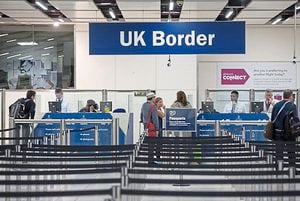Net migration to Shropshire falling after Brexit
Net migration to Shropshire has dropped since Brexit, official figures released today show.

The Office for National Statistics estimates that from July 2015 to June 2016, the month of the EU referendum, 482 more long-term migrants arrived from abroad in Shropshire than left. In Telford & Wrekin the figure was 643.
But in the 12 months after Brexit that figure dropped by 62 in Shropshire and 162 in Telford.
In total, 979 people moved to Shropshire from abroad and 559 left, leaving the latest net migration figure at 420.
In Telford 877 people moved in from abroad and 396 left, leaving the latest net migration figure at 481.The figures show that, overall, the county’s migrant population is still rising, but at a slower rate than before the referendum.
While the Shropshire figures do not give details of where migrants came from, the latest national figures, for 2017-18, show EU migration is at its lowest level since 2012.
Economic conditions
Madeleine Sumption, director of the Migration Observatory at the University of Oxford said: “The UK has clearly become a less attractive country for EU migrants since the referendum.
“The lower value of the pound means that workers coming here for higher wages are getting less than they were in the past, and economic conditions in many of the key EU countries of origin have improved a lot over the past few years.
“Uncertainty about the implications of Brexit may have played a role.”
Nicola Rogers, of the ONS’ Centre for Migration, said: “Today’s figures show that around 270,000 more people are coming to the UK than leaving, so net migration is continuing to add to the UK population. Net migration has been broadly stable since peak levels seen in 2015 and 2016.”
It is still well above the Government’s net migration target of 100,000.
Non-EU net migration to the UK is now almost three times higher than from the EU, the ONS says.
The figures also give details about GP registrations by migrants. From July 2015 to June 2016, 1,511 patients registered, compared with 1,487 patients in the 12 months after.





